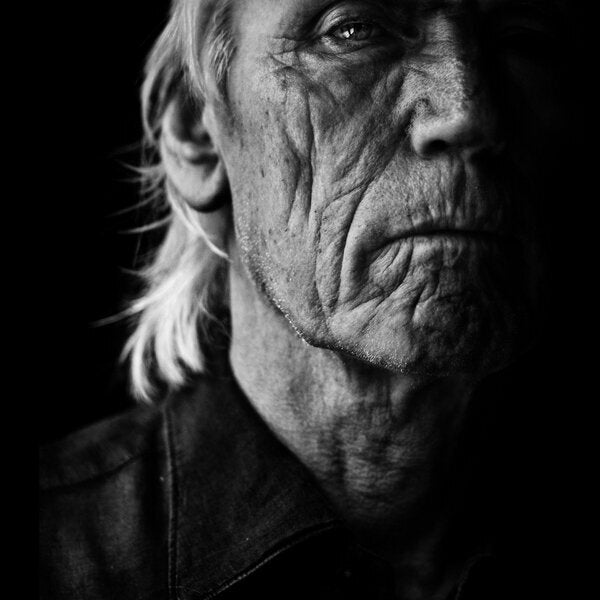Where have all the painters gone? Lying low is the answer, doing that arcane thing involving oils, a palette and an easel under the cover of darkness, for someone, or rather, something has encroached upon their space.
Step forward the photographer, that chronicler of the moment, the here and now, achieving in seconds upon his pixellated canvas that which takes the painter weeks, if not months.

But this is a good thing, for while our art schools lose themselves up their collective fundament and reward the artful installation dodgers for their supposed ideas, photographers have been busy painting with light, as technological progress - due in large part to the acumen of Adobe Systems - has helped to blur the line between fine art paintings and fine art photography.
One only has to pay a visit to New York and the Metropolitan Museum of Art's Faking It exhibition, which traces the history of manipulated photography from the 1840s through to the 1990s, to see that photographers have long been hard at work perfecting their art. This pursuit of perfection has begotten a true artistry, as seen in the photographic work of Ansel Adams, for example.
Photography is concerned, at its heart, with subjectivity; that is, where (and at what) you point your camera. If employed well, this will bear the elusive fruit called composition, or 'the eye'. Technology, make no mistake, is merely the photographer's aid.
As Arthur Goldberg, a collector of contemporary photography, has said, 'great art is great art, whatever the medium'. Real art, therefore - like truth - will always out.
At worst, the photographs which have supplanted Monet's water lilies (the chosen graphic that once hung upon walls in bourgeois homes) are now of the hackneyed variety as peddled by Athena Posters (see Man and Child, 1987) or perhaps the ubiquitous night time shot of Battersea Bridge. As Ben Burdett, owner of London's Atlas Gallery says, 'photography is a language that everyone can understand'.
Photography sits in comfortable compartments, be it fine art (see Man Ray), vintage photography, photo journalism, or in the worlds of fashion or music. As evinced in the work of Annie Leibovitz, Zed Nelson or London-based Dean Belcher, forms and styles often intersect and meld to become something both beautiful and accessible, for they fit our frames of popular cultural reference.
Art dealers have turned their attention to the photographer because of this popularisation. With fine art painters having disappeared (or having been driven underground by an uncaring populace), the onus now rests on the creators of digitally enhanced canvases to give to us the art that reflects our own curious modern lives.

Interest is also growing in conceptual photography, such as the late 20th century photogram artists like Floris Neusűss whose work may be considered fine art by virtue of not being reproducible.
But things can get out of hand, as seen in the poisonous, mercantile aspect of the art auction. In 2011, a 1999 Andreas Gursky photographic work called Rhein II was sold for $4.3 million at Christie's. The art world possesses the power, therefore, to attach a price tag to a work of art in the same way a mortician ties a tag to the toe of a cadaver. This system of value serves only to weigh down the artist with the notion that his creations possess ludicrous values, whereby he is robbed of the hunger which caused him to create in the first instance.
But it is of small consequence that art sells. It has been like that for millennia; with a patron and a brief, an artist can go to work. And artists have been very productive of late. Photographers like Rankin or Dean Chalkley have smuggled their art into the mainstream and have been rewarded for it. As has Betina La Plante, a Los Angeles-based commercial and fine art photographer working almost exclusively in portraiture. Working in black and white, she renders a chiaroscuro effect that unites the emotional expression that can be found in charcoal sketches with the pin-sharp exactness of a Zeiss lens. A person's physiognomy is turned into a landscape, as can be seen in her portrait of the late Chris Stamp (top picture).
The considered approach of La Plante is similar to that of Lawrence Watson, a photographer popularly known for capturing iconic images of Oasis and Paul Weller (above). In paying close attention to his subjects in carefully chosen environments, such as in recording studios or atop the Empire State Building, his compositions threaten to burst from their frames, and as a result, live long in the memory.
Therefore, the rule of thumb for photographic artists must be: choose with care the things with which you would fill your frame. For it is in these choices that we, the 'consumer', are able to discern and appreciate the artist's eye: that is, the quality which makes him what he is.
© Jason Holmes 2013 / jantholmes@yahoo.co.uk / @JasonAHolmes
Top photograph by Betina La Plante/bottom photograph by Lawrence Watson
